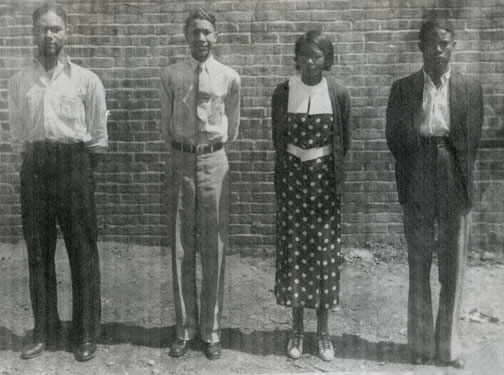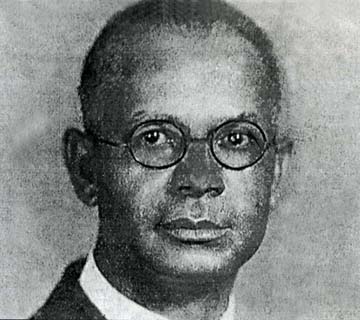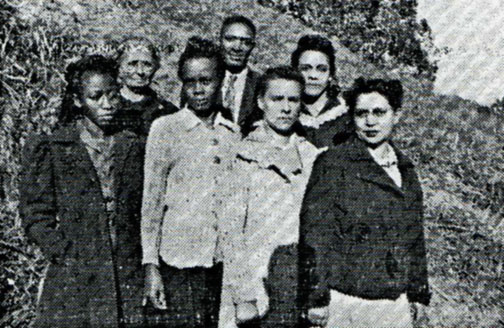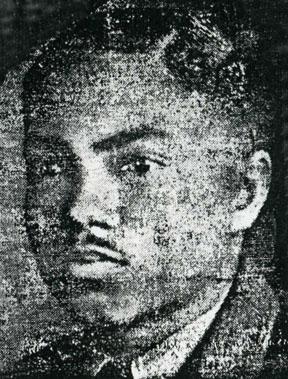

Magnolia Avenue Teachers and “One of the most outstanding attributes of Magnolia Avenue High School was its teachers. They were fantastic and knew how to draw out the best from students and from the facility (even though the school was inadequate in comparison to the white schools). These teacher fulfilled many roles, but fundamental to their work was that they were always encouraging us to learn. They did not take pride in bestowing punishment; they encouraged and whetted our appetite for learning.” Edgar E. Smith |
||||||||||||||||||||||||||
The Secondary School Study was establishing new roles for educational administrators and teachers. Democratic ideals served to define the experimental efforts of schools. The principal provided direction and instilled confidence while also fostering flexibility and extending authority among the staff who were encouraged to reexamine their teaching methods and to explore new configurations for the secondary school curriculum. |
||||||||||||||||||||||||||
|
“Professor Bowman was such a dynamic principal and exemplified the finest aspects of educational leadership. He ensured that all students would receive the best education possible even though we were in a segregated system. Magnolia Ave High School was a vibrant place and, when he died unexpectedly during the summer of 1944, the school was renamed in his honor.” |
|||||||||||||||||||||||||
from Secondary School Study documents: Action Taken in Magnolia |
||||||||||||||||||||||||||
“Mr. J. G. H. Bowman, Principal of Magnolia Avenue High School, Vicksburg, Mississippi was asked by the Study office to represent the Study at a meeting of Texas principals at Marshall and Karnack, October 23-25. An invitation from Mr. D. B. Taylor, Special Supervisor with the Texas Department of Education, gave the Study this opportunity. Mr. Bowman writes as follows about another meeting: ‘On several occasions Mr. Easom has called the attention of the teachers of the state to the little report I made of our pupil-teacher activities last year. I was surprised Sunday morning—when, as a result of Mr. Easom’s talks with the teachers, I received a long distance call from Southern Christian Institute, Edwards, Mississippi, requesting me to come over Monday night and talk to the teachers about the Secondary Study and our own activities.’ from To and From Our Schools, Vol. 1 No. 1, November 1941 |
||||||||||||||||||||||||||
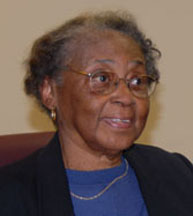 Carrie Reynolds “Mr. Bowman was a strict man. If you heard him clear his throat, you knew that he meant business. He commanded respect and we gave him respect.” Carrie Reynolds |
|
|||||||||||||||||||||||||
“Miss Katie Washington was highly admired—she respected you and you respected her (with a bit of fear—she was strict). But she became a mother figure as one of our teachers.” Saltine Austin Tyler |
||||||||||||||||||||||||||
"While it may have been rare at that time to have a female principal, Katie M. Washington kept order. She didn’t have any trouble keeping the school focused on learning and maintaining discipline.” |
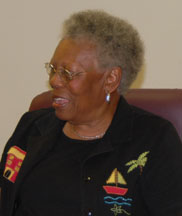 Frances Pearline Williams |
|||||||||||||||||||||||||
from A Report of Teacher-Pupil Activities, 1942 |
||||||||||||||||||||||||||
“The teachers asked for and received our respect, New Magnolia Avenue teachers for the 1944 school year: |
||||||||||||||||||||||||||
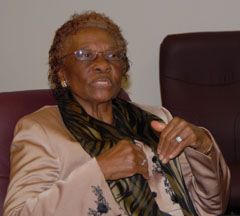 Orelia Peterson Crump |
“Teachers were easy to approach. They appreciated us and wanted us to achieve the best. They didn’t want us to miss anything. They knew what we were going to face when we finished high school, and they would do anything to ensure that we were well-prepared. If a student missed something during class, it was just a matter of waiting until the end of day and there was always a teacher available to help.” |
|||||||||||||||||||||||||
“If you needed extra help or if you had a problem, there would always be a teacher willing to spend the extra time. The teachers were truly committed and wanted us to learn.”
|
||||||||||||||||||||||||||
from Secondary School Study documents: English for All Groups “With the view toward making the study of English more functional and less traditional, the courses in the eleventh and twelfth-grades were reorganized along these lines:
from “A Report of Teacher-Pupil Activities, 1942”
|
||||||||||||||||||||||||||
from Secondary School Study documents: “Mr. J. R. Buck, one of our teachers of the social sciences, attended the Workshop at Hampton Institute in the summer of 1941 and . . . formulated a tentative program for several of his classes. The central point in the tentative program was a plan to interest the children in working cooperatively with the teacher and with each other in securing information about subjects of interest to them. To put it simply, it was a planned attempt to depart as far as might seem advisable at the present time from the teaching of abstract subject matter from some author’s text book, and to launch out as far as might seem safe in the direction of having children select topics in which they are interested and gather information about these topics from all available sources. from “A Report of Teacher-Pupil Activities," 1942 |
||||||||||||||||||||||||||
 Thelma Rush |
“What Magnolia Avenue teachers taught us was not just academic work; they taught us about everyday life and what had been happening to us as black people. Mr. Buck, especially, talked to us in the civics class about how the democratic process should work and what it meant to be in a real democracy. He described how he grew up, and the sacrifices his family made for him. Mr. Buck was helping us understand what our families were doing for us, and he was ensuring—insisting—that we take the opportunity to learn and to make something of ourselves.” Thelma Rush | |||||||||||||||||||||||||
“Mr. Bowman and Mr. Buck, while greatly admired by the students, both had a heavy hand. Discipline was greatly instilled and communicated to the students. Any punishment at school was often received at home as well. Students were asked and were expected to live up to a standard of conduct, and we did.” |
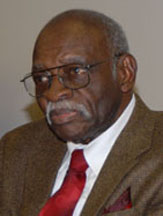 Frank Crump, Jr. |
|||||||||||||||||||||||||
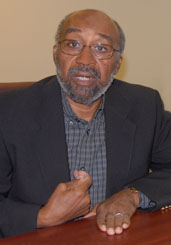 Edgar E. Smith |
||||||||||||||||||||||||||
| “Our teachers were tough but also 'oh so gentle.' They were tough in the sense that they wanted to draw out all that they thought we had, all of our potential. But they knew there was a limit AND they knew when to stop pushing. The teachers were not trying to make everyone the same; rather, they were committed to making us become the best we could be.” Edgar E. Smith | ||||||||||||||||||||||||||

an institutional member of the International Coalition of Sites of Conscience
Museumofed@gmail.com

